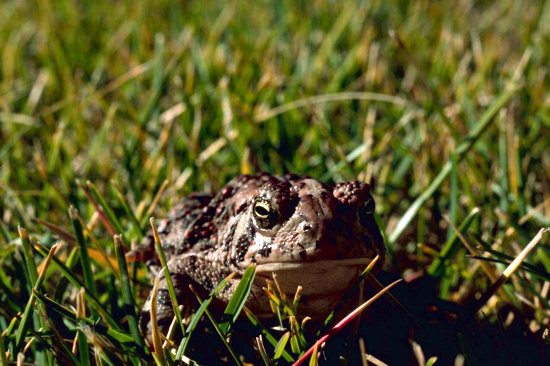

I'm sure you've heard someone say, "I'd know that voice anywhere". We're really quite good at that, though it's seldom a matter of life or death. Our primary sense for recognition is sight, not sound, and we learn individuals' voices just as we learn language, favorite tunes, and faces. For many animals, though, recognizing the "voice" of their own kind is much more serious.
For these, sound recognition is genetic rather than learned, for they
depend on sound to recognize other members of their species and, for many, members of
the opposite sex. Frogs, crickets, and even some fish depend on sound for such
recognition, and a failure of interpretation may result in failure to successfully
mate—a certain way to weed out genetically those individuals with a tin ear. The next
time you hear the raucous chorus of varied species of toads calling at night from the
edge of the breeding pool, remember that this is not just a bunch of good buddies
getting together for a night of song: it's literally a matter of genetic life or
death.

Listen to the Audio (mp3 format) as recorded by KTEP, Public Radio for the Southwest.
Contributor: Arthur H. Harris, Laboratory for Environmental Biology, Centennial Museum, University of Texas at El Paso.
Desert Diary is a joint production of the Centennial Museum and KTEP National Public Radio at the University of Texas at El Paso.

Woodhouse's Toad (Bufo woodhousei) on its way to a breeding pond. Image by Gary M. Stolz, courtesy of the U.S. Fish and Wildlife Service.
Nature Songs. Recordings of a number of animals, including several amphibian choruses.